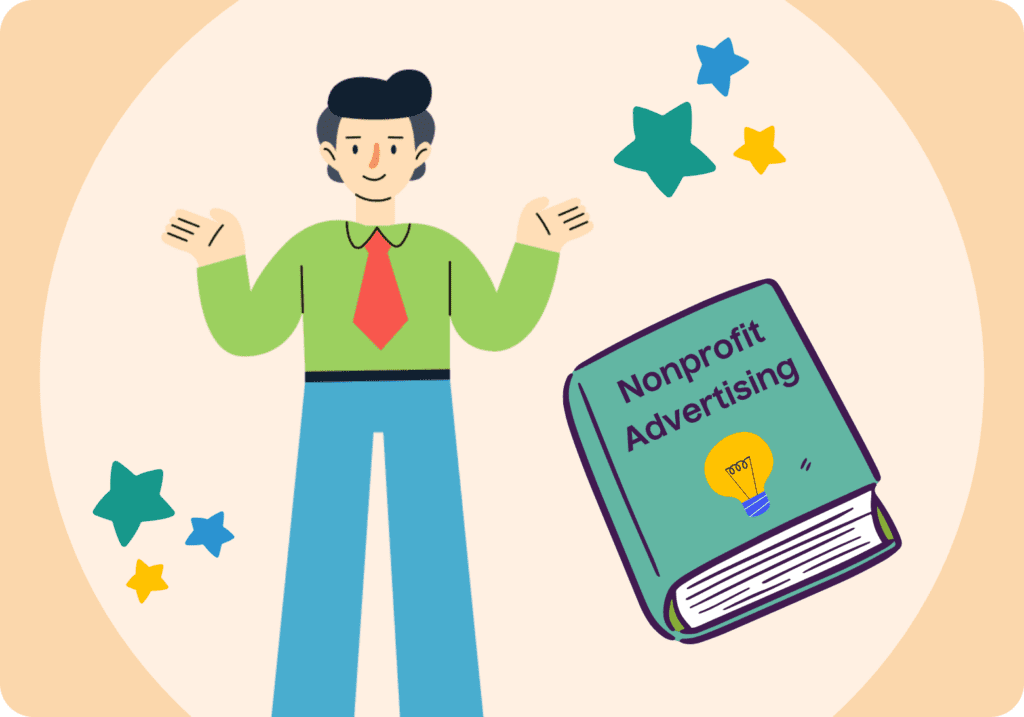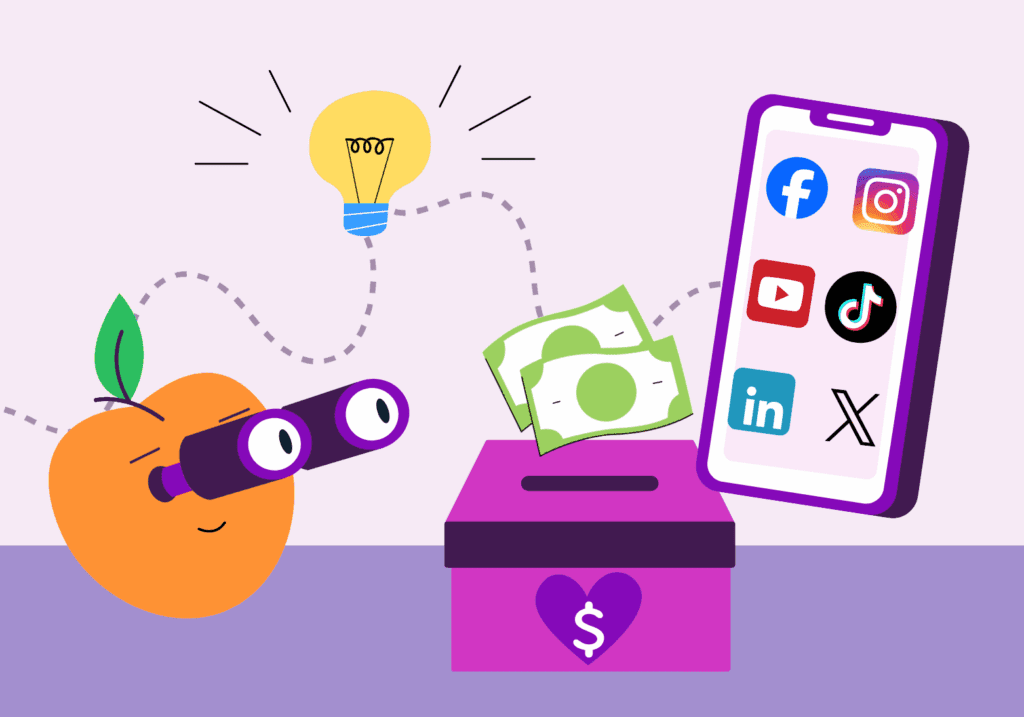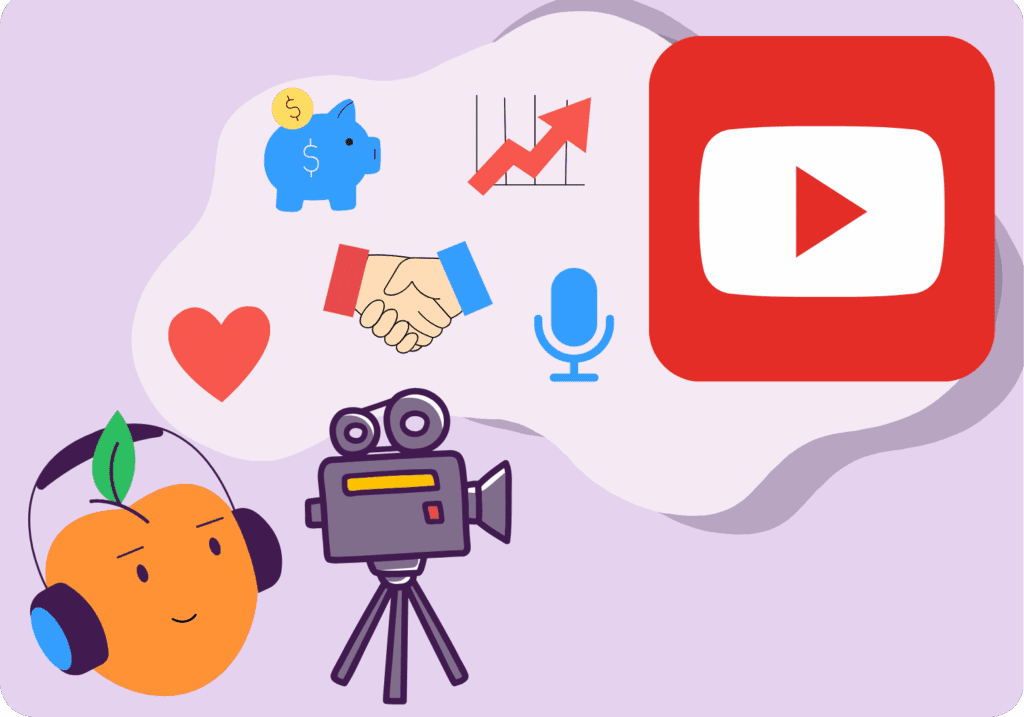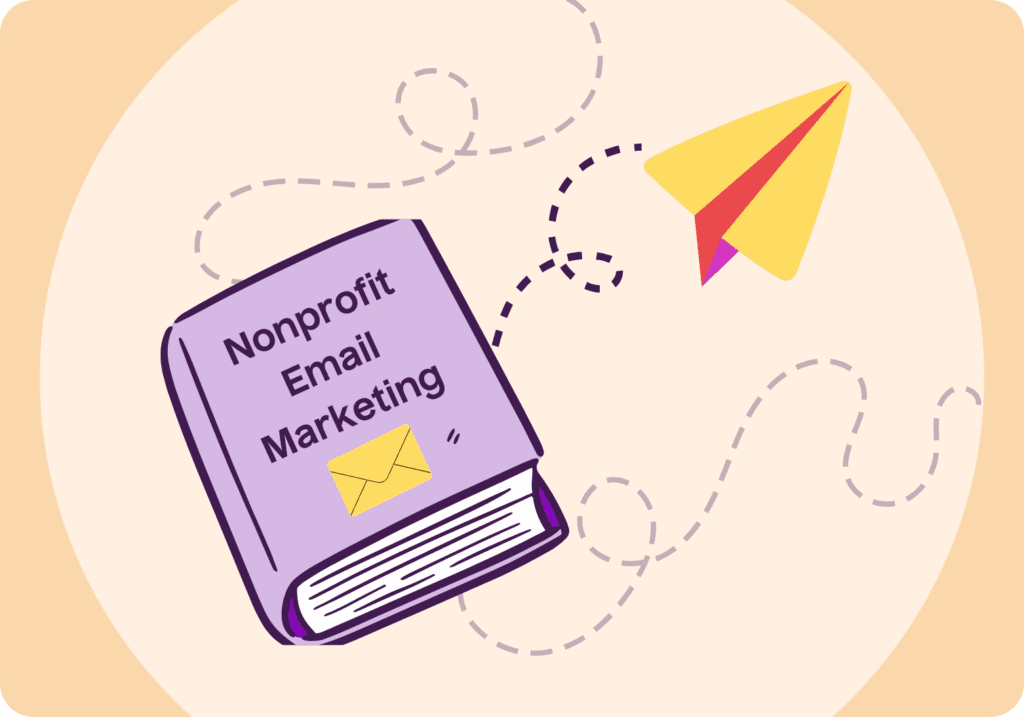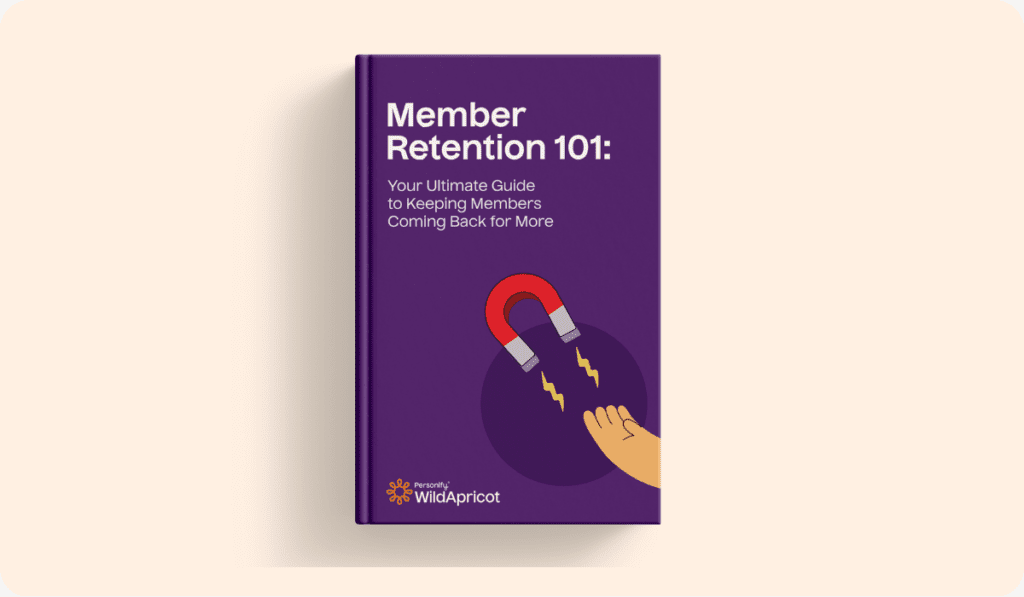When you’re passionate about a cause, it can be disappointing to realize you don’t always have the budget to amplify it. Corporations spend billions of dollars every year creating TV commercials, print ads, billboards and online ads — a luxury that most nonprofits, especially local ones, can’t afford.
Plus, advertising a cause is an entirely different ballgame than promoting a product or service. Nonprofit organizations know this better than anyone, as getting the word out about their work can often feel like an insurmountable task. Instead of communicating a product’s impact on a consumer’s life, as in traditional advertising, nonprofits must communicate the impact a donor’s money will have on a cause. It may be more meaningful, but it’s also less tangible and, therefore, more challenging to communicate.
Not to worry. We’ve got you covered with the Ultimate Guide to Nonprofit Advertising.
In this guide, we’ll cover the basics of advertising for nonprofits, including outbound vs inbound marketing, the benefits and importance of advertising, different types of ads to leverage, how to create nonprofit ad campaigns, real-world examples to give you a concrete understanding of how to apply these principles and finally some tips and best practices to refine your strategy.
What is Nonprofit Advertising?
Let’s start with the basics. Nonprofit advertising refers to the paid channels nonprofit and charity organizations use to promote their services, fundraising and mission. It’s a subset of nonprofit marketing, which is a broader term describing all methods a nonprofit uses to promote its brand and mission, paid or unpaid.
Also referred to as charity advertising, nonprofit advertising is about raising money and awareness for a specific cause, rather than getting consumers to buy a particular good or service. Because of this unique end goal, nonprofit advertising is often pathos-oriented and story-driven, with special emphasis placed on the impact donations will have on the organization’s mission.
Nonprofit advertising should make donors feel like they’re a part of something greater and that supporting the nonprofit’s cause will help affect real change.
Which Funds Can Be Used for Advertising?
Many nonprofits, especially those just starting out, may wonder if they’re allowed to use funds for advertising. And if so, which funds can be used? If this is you, don’t worry; you’re not alone!
The short answer is yes; nonprofit organizations are allowed to dedicate a portion of their budget to advertising. When it comes to advertising, nonprofits have two options on where to draw funding:
- Unrestricted funds: money dedicated for any operational purposes.
- Restricted funds: money dedicated for a specific purpose like improving marketing strategy. It can also include an advertising-specific grant or a donation earmarked for advertising.
If a nonprofit receives funding from government grants or foundations, it may come with restrictions on how that money can be used for advertising. Some grants only allow funds to be used for “programmatic” expenses, not marketing or advertising. Advertising must comply with funder guidelines, which could require pre-approval for campaign content.
In a similar vein, if a donor specifies how their contribution should be used, nonprofits must honor this request. For example, if a donation is earmarked for educational programs, it generally cannot be redirected to pay for advertising.
The bottom line is that while nonprofits are mission-driven, they still need to promote their cause, raise awareness, attract donors and engage with their communities. To remain compliant and ethical in nonprofit advertising, keep these tips in mind:
- Transparency and Honesty: Be clear about the purpose of ads, especially for donation appeals.
- Privacy Compliance: Follow privacy laws when collecting data via ads (like PIPEDA in Canada or CCPA in California).
- Mission-Focused Messaging: Keep advertising focused on the nonprofit’s mission to avoid tax and ethical issues.
Outbound vs. Inbound Marketing
Have you ever seen an ad that felt tailor-made just for you? The product, messaging and even color palette may have been suited precisely to your tastes. On the other hand, have you ever seen an ad that felt so unsuited for you, maybe on TV or on the radio, and wondered how it even got to you? Perhaps it felt utterly random, almost like it landed there by mistake. Of course, in advertising, nothing is a mistake.
You may not be aware of it, but the ads on your social media feeds and TV provide the perfect example of outbound vs. inbound marketing. The first ad is an example of inbound marketing, which focuses on curating content with a specific group of people in mind. The second is an example of outbound marketing, which leverages a more aggressive and less personal approach to push a message in front of the largest group of people possible.
Inbound focuses on interests and pain points on an individual level, while outbound strives to cast the widest net and raise as much awareness as possible. Neither is inherently better or worse, and each has its own strengths and weaknesses. It’s when and how you use them that counts.
For a more detailed breakdown, let’s look at the stages of each marketing style, a few examples, and the pros and cons of each.
Inbound Marketing
Inbound marketing focuses on attracting people to your brand by offering valuable content, solving their problems, and building long-term trust. Instead of pushing messages to an audience, it draws people in.
Stages of Inbound Marketing
- Attract: Use blogs, SEO and social media to attract people to your website or platform.
- Convert: Turn visitors into leads by offering gated content (like e-books or webinars) in exchange for contact information.
- Engage: Nurture leads through email marketing, personalized content, and marketing automation.
- Delight: Continue providing value post-conversion (like tips, support, or community engagement) to build brand loyalty.
Read more: Lead Generation for Nonprofits: 9 Essential Strategies to Attract Donors
Examples of Inbound Marketing
- Content Marketing: Blogs, articles, guides, white papers, case studies.
- Search Engine Optimization (SEO): Optimizing your website to rank higher in Google search results.
- Social Media Content: Organic posts on LinkedIn, Instagram, or Facebook that provide value.
- Email Marketing: Automated email nurture sequences.
- Webinars/Free Courses: Offering educational resources in exchange for email sign-ups.
Pros vs Cons
Inbound marketing tends to be much more cost-effective than outbound marketing due to its targeted nature. You’re advertising directly to your audience, so it’s no surprise you get a better return on your investment. Inbound marketing also builds trust, creating a positive feedback loop between you and your audience, positioning your brand as a thought leader and change maker. Inbound marketing is ideal for garnering long-term results since highly curated content like blogs and SEO continues to bring in traffic over time.
On the other hand, inbound marketing is more time-consuming than outbound. Building an audience and ranking for SEO can take months or even years. In addition, audiences often must wade through high volumes of content to even find you due to content overload. This high level of competition means your content must be exceptional to stand out. Creating valuable content and tracking data also requires SEO, content marketing and analytics skills.
Outbound Marketing
Outbound marketing involves actively pushing messages to potential customers through paid advertising, cold outreach, and other direct tactics. It’s often seen as more traditional and “interruptive” marketing.
Stages of Outbound Marketing
- Identify: Identify the target audience and where they consume content (TV, social media, etc.).
- Create: Develop a clear, compelling message that highlights a product, service, or cause.
- Distribute: Launch the message through paid ads, emails, cold calls, or direct mail.
- Measure: Track the impact of the campaign (clicks, conversions, leads, and sales).
Examples of Outbound Marketing
- Paid Ads: Display ads, banner ads, retargeting ads and Google Ads.
- TV, Radio and Print Ads: Traditional forms of advertising.
- Cold Emailing and Cold Calling: Direct outreach to potential leads.
- Direct Mail: Sending physical marketing materials to people’s mailboxes.
- Event Sponsorships: Promoting a brand at conferences, trade shows, or community events.
Pros vs cons
With outbound marketing, speed is the name of the game. This strategy allows you to reach audiences quickly, especially with paid advertisements. Outbound marketing also allows you to broaden your reach substantially, as TV, radio, podcast and social media ads all reach large audiences at once. This form of advertising is also simple to implement, and easier to control the timing, placement and message than inbound marketing. Finally, paid ads provide instant metrics like impressions, clicks and conversions for a measurable impact.
When it comes to cons, outbound marketing has plenty. First, this form of outreach can be much pricier than inbound, as TV ads, PPC and cold outreach software can all be costly. Outbound marketing is also viewed as intrusive and “interruptive” since it forces content onto audiences. Mass outreach also means many people won’t engage with the message, resulting in low conversion rates, which can be especially disappointing if you’ve already paid a lot of money.
So, which should you use? Both inbound and outbound marketing have their place. For long-term growth and organic engagement, inbound marketing is ideal. If you need fast results or want to reach a broad audience quickly, outbound marketing is more effective. Many organizations use a hybrid approach, blending both strategies to maximize results.
Benefits and importance of advertising for nonprofits
We just threw a lot of information at you, so at this point you may be wondering, why go through all that trouble? Is nonprofit advertising really worth it? Short answer, yes! Advertising can help your nonprofit raise awareness about your cause, increase your impact, attract new donors and engage more deeply with your community. Let’s look at a few key benefits of nonprofit advertising in depth.
Awareness
This one may seem obvious, but that doesn’t make it any less important! Regardless of the size of your organization, it could always benefit from more involvement. The more people dedicated to a cause, the more it can thrive. Advertising your nonprofit gets the word out to as many people as possible in the hopes that a percentage of them will convert into donors, volunteers and supporters.
Since nonprofits often operate in highly competitive spaces, standing out is essential. Advertising allows nonprofits to spotlight key issues, introduce their mission and showcase the impact of their work. By using digital ads, print media and social media campaigns, nonprofits can reach a broader audience that might not have discovered them otherwise.
Fundraising
Without proper funding, nonprofits would never get their mission off the ground. Access to continued, reliable funds ensures nonprofit organizations can operate daily, launch new campaigns, sustain longstanding ones, supply volunteers and ultimately, drive change.
Whether it’s through social media ads, email marketing, or event promotion, advertising can drive donations by creating a sense of urgency or appealing to donors’ emotions. Nonprofits can use ads to promote specific fundraising campaigns, like “Giving Tuesday” initiatives or spotlight specific needs, such as disaster relief efforts. By using storytelling techniques, such as highlighting a beneficiary’s personal story, nonprofits can create compelling calls to action that encourage people to donate.
Read more: Effective Nonprofit Fundraising: How to Ask for Donations Like a Pro
Donor Retention
Donor retention is key to sustainable nonprofit growth, as acquiring new donors is typically more expensive than retaining existing ones. Advertising plays a key role in maintaining donor relationships by keeping supporters engaged and connected with the nonprofit’s ongoing work. Through targeted ads on platforms like Facebook and Google, nonprofits can re-engage past donors with updates on new initiatives, success stories and gratitude messages. For example, a nonprofit could run a “Thank You” video ad highlighting how donations were used to achieve specific results, making donors feel appreciated and valued.
Read more: Donor Retention Strategies for Nonprofits
Volunteer Recruitment
Volunteers are the lifeblood of nonprofits, providing crucial support for operations, events and community programs. Advertising helps recruit new volunteers by reaching untapped audiences who might be looking for ways to give back. Social media platforms like Facebook and Instagram enable nonprofits to create localized recruitment ads that target people based on their proximity to volunteer opportunities.
For example, a community food bank might run a Facebook ad targeting people in its local area, asking for help during the holiday season. Messaging that emphasizes the personal fulfillment and impact of volunteering can appeal to people’s desire to contribute to a greater cause.
Read more: How to Recruit Volunteers from Start to Finish: 4 Phases to a Successful Volunteer Program
Types of Ads
Now that you know what nonprofit advertising can do, it’s time to put it to work. There are quite a few ad types at your disposal, from staples like radio and print to more recent innovations like Facebook and Google. The trick is to understand your audience and what will appeal to them the most.
It’s important to consider more than just special interests and pain points; look at demographics like age, gender and location. Where will your target audience be most likely to see your ad? Let’s look at the more traditional ad categories first.
Print ads are one of the oldest and most reliable forms of advertising. They can include magazines, newspapers, newsletters and even billboards. Despite the ubiquity of digital ads, print ads have the upper hand in a number of key ways.
Consumers consistently rate print ads as more trustworthy than digital ads when making a purchase decision. This could be because print ads come from sources they trust, like their favorite magazine or a local newspaper, or because of ad fatigue experienced with online ads. Print ads also tend to be more memorable for the same reason, distinguishing themselves from the hundreds of online ads consumers are exposed to.
Radio
Radio can be a cost-effective way for nonprofits to reach a larger audience and raise awareness about their mission. For a relatively low cost, nonprofits can use radio airwaves to tell their story, drive action, and direct users to their website or social media accounts.
Nonprofits may also qualify for free Public Service Announcements (PSAs) on community radio stations. However, these messages must be formatted as announcements, not direct advertisements, so be careful with wording and do your research if you decide to go this route.
Facebook ads are an incredibly sharp tool in your advertising arsenal. Thanks to Facebook’s robust advertising platform, there are several different ad formats to choose from.
A Page Post Engagement ad allows you to promote a popular post from your profile to a wider audience.
Call to Action ads allow you to promote an event and inspire volunteers and donors to participate.
Facebook also allows nonprofit accounts to add a “Donate” button to their profile, allowing users to easily donate to your cause without leaving the site.
Read more: How to Create a Fundraiser on Facebook: A Step-by-Step Guide
Google is one of the most effective ways to reach people since your target audience is almost certainly using it. Google’s Ad Grant program provides eligible nonprofits with up to $10,000 per month to promote their organization on Google Search. The grant allows nonprofits to run text-based ads that appear in Google’s search results, helping organizations increase visibility, drive traffic to their websites, and boost donations, event sign-ups, and volunteer recruitment.
Google’s data analytics allows you to monitor engagement and track the success of your ad. This is a fantastic tool as it provides a window into what’s getting clicks and what isn’t, allowing you to adjust your strategy as needed to optimize the performance of your campaign.
Read more: The Top 25 Things You Didn’t Know About Google Ad Grants
How to Create a Nonprofit Ad Campaign
We’ve provided a ton of useful information so far about how to create an effective advertising strategy for your nonprofit — now the trick is to put it all together.
The best place to start is by establishing a clear, attainable goal for your campaign. It could be to raise donations, recruit volunteers or promote an upcoming event. Who are you trying to reach? For example, if you’re looking to recruit volunteers, you might target individuals interested in social impact or community service. Use demographic and behavioral data to refine this audience. From there, follow these steps:
1. Choose the Right Platform
Decide where your ads will run. If you’re using Google Ad Grants, you’ll be limited to text-based ads on Google Search. You can also consider Facebook, Instagram and LinkedIn for visual ads, especially if you’re focused on engagement or event promotion. Each platform has unique targeting options that allow you to reach people based on interests, location and online behavior. Don’t forget you also have radio and print ads at your disposal!
2. Create Compelling Visuals and Copy
Use clear, action-oriented copy for text-based ads (like Google Ads). Since space is limited, focus on a strong call-to-action (CTA) like “Donate Today” or “Join Us to Make a Difference”. Using visual platforms (like Facebook or Instagram), incorporate compelling images or videos that evoke emotion and showcase your nonprofit’s mission.
3. Build a Landing Page for Conversions
Once users click on your ad, they should be taken to a landing page that aligns with the ad’s message. For instance, if your ad asks for donations, the landing page should have a donation form with a simple, intuitive design. Avoid sending users to a generic homepage, as this can decrease conversions.
5. Set Up Campaign Tracking and Analytics
Use tools like Google Analytics to track user behavior and link it to your ad performance. Set up conversion tracking to see how many users donate, sign up or engage with your content. If using Google Ad Grants, you must maintain a 5% click-through rate to stay in the program. Track ad performance regularly and adjust campaigns as needed.
6. Launch, Monitor and Optimize
Once your campaign goes live, monitor its performance. Are people clicking the ads? Are they converting (donating, signing up, etc.)? Use A/B testing to experiment with different headlines, images and CTAs. If performance is low, adjust keywords, refine ad copy and improve the landing page experience.
Real-World Examples
1. Charity:Water
Charity:Water, is a nonprofit whose mission is to bring clean water to people in developing countries. Although many people think of a lack of drinking water, their campaign aimed to show that the ramifications of a lack of water extend far beyond that by presenting common foods that need water to cook.

The image is clean and uses simple, everyday imagery, making it even more effective since the viewer can easily imagine how much their own lives would be changed if they were unable to prepare a simple meal.
Takeaway:
Creating an advertisement that relates your cause to the viewers’ lives can help strengthen its message. Even if you’re trying to solve global problems, sharing stories that relate to insular moments instead can help viewers put themselves in the shoes of the community you’re helping more easily.
2. Catalyst
Catalyst aims to make the workplace a better and more equal place for women. To that end, they launched a series of ads for International Women’s Day that shared words that are frequently used to describe women negatively and swapped them out for words that didn’t include any gender bias.
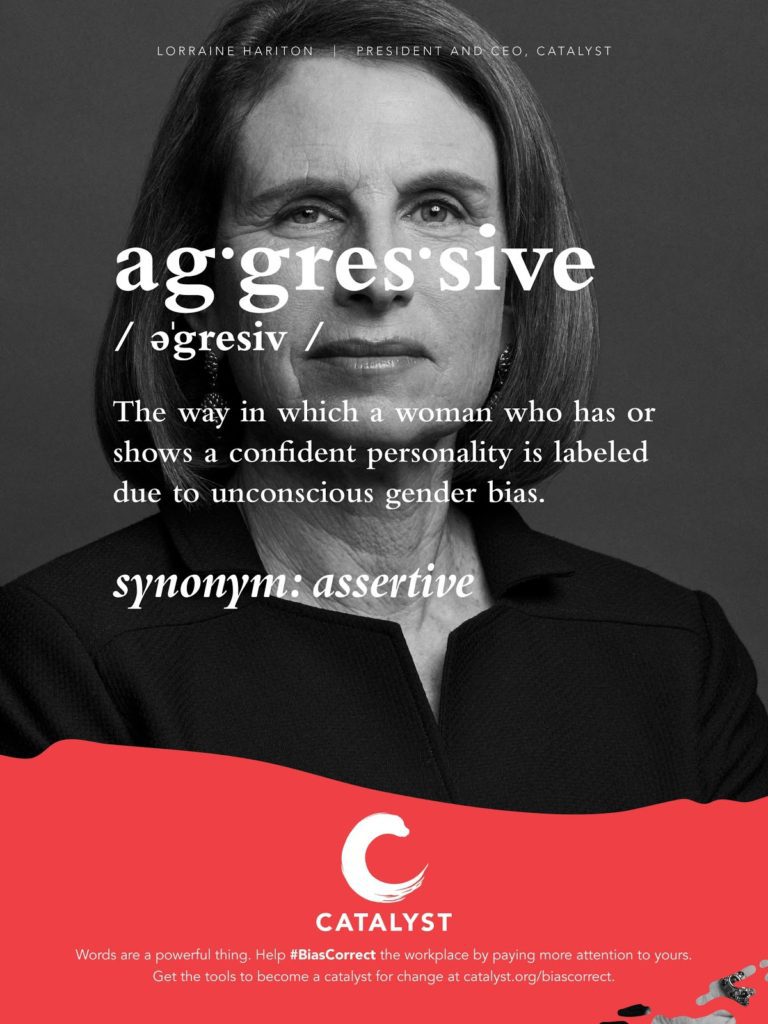
But the really unique part of this campaign?
They created a Slack plugin to identify unconscious bias in messages sent through the platform to accompany it. Since so many companies use Slack, it was a great way to get in front of their target audience and educate people at the same time.
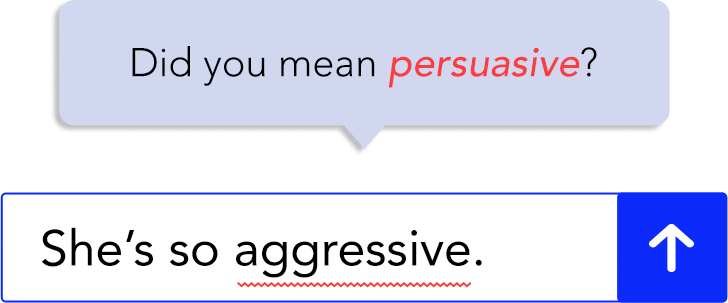
Takeaway:
Making your cause visible within the spaces where your target audience resides — whether online or offline — is the best way to raise awareness for it. There’s no need to restrict yourself to traditional billboards anymore!
3. Love Has No Labels
In today’s world, acceptance is sometimes hard to come by. Love Has No Labels is a nonprofit that works to promote the inclusion of all people, regardless of their race, sex, gender, ability, or age.
To promote their movement, they released a heartwarming campaign that went viral, depicting a mystery duo behind an enormous X-ray machine. Viewers are only able to see the people as two nearly identical skeletons. It’s not until those two people step out from behind that viewers are able to see how different they look on the outside, reminding us that it’s the inside that really matters.

Their video was viewed over 160 million times, making it the 2nd most viewed video of 2015, and it drove more than 2.7 million visits to their homepage.
But they didn’t stop there. They also included a quiz that video watchers could take in order to uncover their own implicit biases, as well as additional content they could then use to learn how to overcome them.
Takeaway:
Although driving greater awareness is great, it’s key to tie those campaign views to a concrete action. Make sure people who see your ads have a specific next step to take, whether reading a blog to learn more about the issue or subscribing to your newsletter, so that you can capitalize on their interest to build a closer relationship with them.
Best Practices
Now that you’re equipped with a roadmap to success, let’s go over a few tips and best practices for amplifying your nonprofit’s mission and goals.
Set Goals
First, it’s important to set clear, measurable goals. Try using the SMART framework to set goals, meaning your goals should be Specific, Measurable, Achievable, Relevant, and Time-bound.
You’ll also want to establish clear performance indicators to track your progress, such as click-through rate, money raised or volunteer sign-ups.
Focus on Your Mission
Remember to keep your mission at the center of everything you do. Focus on telling compelling stories about the work you do and the impact it has on the community. Statistics and facts go a long way, but an emotional story connects with viewers on an entirely different level.
Visual platforms (like Facebook, Instagram, and YouTube) are perfect for storytelling through images and video. Finish strong with a powerful CTA that emphasizes the impact of the donation.
Transparency
It’s essential to tell donors exactly where their money is going. Openness and transparency will increase your brand’s credibility with donors and encourage more donations and support in the future. For example, “Your $25 donation feeds a family for a week” is more powerful than “Donate to Our Cause.” When supporters see tangible results, they’re more likely to act.
Leverage Software
Finally, it’s crucial to leverage technology at every opportunity. Today’s technological landscape affords so many opportunities to take your advertising to the next level, why not use them?
With software, nonprofits can streamline advertising efforts, automate repetitive tasks and focus on what truly matters — advancing their mission. Features like automated email marketing, mobile-friendly landing pages and event promotion make nonprofit management easy.
Effective advertising is no longer a “nice-to-have” for nonprofits — it’s a mission-critical tool for driving donations, recruiting volunteers and building community support. By crafting targeted campaigns, telling compelling stories and tracking performance, nonprofits can dramatically increase their impact. But manual processes can hold you back in a world of limited time and resources. That’s where technology becomes a game-changer.
Level Up Your Nonprofit’s Advertising Efforts with WildApricot
WildApricot is a fantastic tool for automating tasks, simplifying processes and tracking your impact. The software makes it easy to create and automate email marketing campaigns to promote your next event or fundraiser. Utilize tools like custom email templates, schedule-sends and targeted audience segmentation.
A well-designed landing page is essential to direct potential donors to after you’ve captured their interest. WildApricot makes building beautiful landing pages effortless with easy drag-and-drop creation, built-in forms and a mobile-friendly design.
WildApricot tracks member and donor activity, allowing nonprofits to identify engaged audiences for retargeting in future advertising campaigns. By understanding supporter behavior, you can create more effective ad campaigns.
WildApricot makes reaching the right people at the right time easy. Instead of juggling multiple platforms and endless admin work, nonprofits can consolidate their efforts into one intuitive system.
Don’t let limited resources limit your impact. Discover how WildApricot can help your nonprofit simplify, automate and amplify its reach. See the difference it can make for your next campaign — and each one after that. Take the first step toward smarter, more effective nonprofit advertising today.

